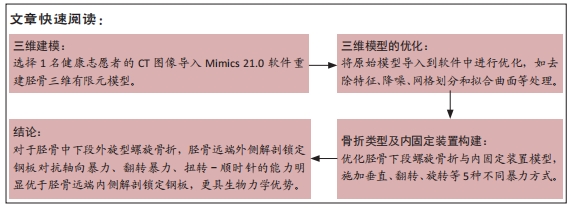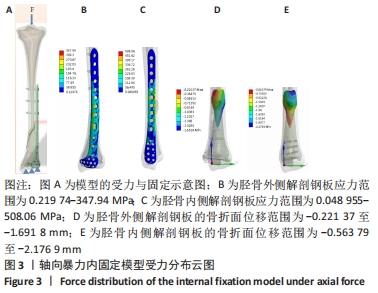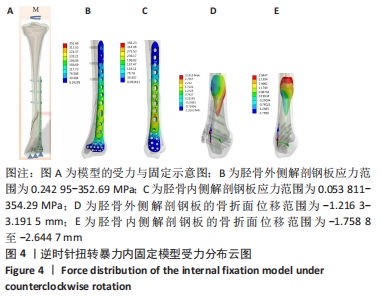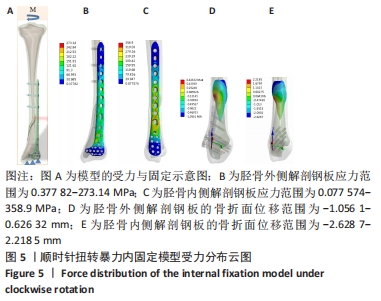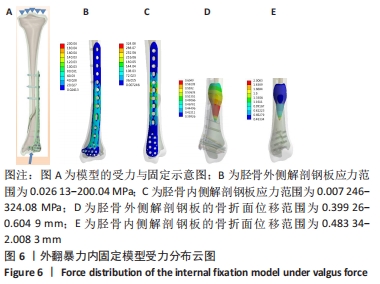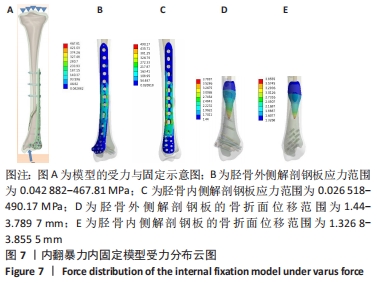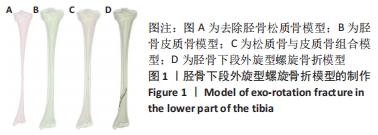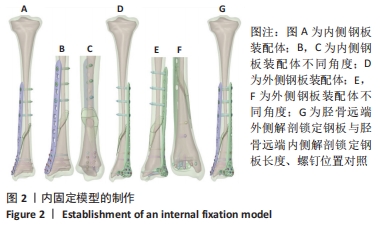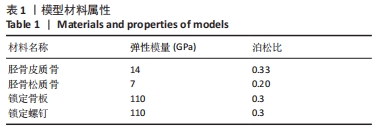[1] WANI IH, UL GANI N, YASEEN M, et al. Operative Management of Distal Tibial Extra-articular Fractures - Intramedullary Nail Versus Minimally Invasive Percutaneous Plate Osteosynthesis. Ortop Traumatol Rehabil. 2017;19(6):537-541.
[2] COSTA ML, ACHTEN J, GRIFFIN J, et al. Effect of Locking Plate Fixation vs Intramedullary Nail Fixation on 6-Month Disability Among Adults With Displaced Fracture of the Distal Tibia: The UK FixDT Randomized Clinical Trial. JAMA. 2017;318(18):1767-1776.
[3] WONG C, MIKKELSEN P, HANSEN LB, et al. Finite element analysis of tibial fractures. Dan Med Bull. 2010;57(5):A4148.
[4] 李维新,袁斌云.跟骨骨折锁定钢板内固定与普通钢板内固定的有限元分析[J].中医正骨,2013,25(4):10-11.
[5] GALLOWAY F, KAHNT M, RAMM H, et al. A large scale finite element study of a cementless osseointegrated tibial tray. J Biomech. 2013;46(11):1900-1906.
[6] VAIENTI E, SCHIAVI P, CECCARELLI F, et al. Treatment of distal tibial fractures: prospective comparative study evaluating two surgical procedures with investigation for predictive factors of unfavourable outcome. Int Orthop. 2019;43(1):201-207.
[7] GUO C, MA J, MA X, et al. Comparing intramedullary nailing and plate fixation for treating distal tibail fractures: A meta-analysis of randomized controlled trials. Int J Surg. 2018;53:5-11.
[8] REDFERN DJ, SYED SU, DAVIES SJ. Fractures of the distal tibia: minimally invasive plate osteosynthesis. Injury. 2004;35(6):615-620.
[9] 刘印文,郑昱新,王学宗,等.手法闭合复位经皮微创固定治疗胫骨中下段骨折的病例对照研究[J].中国骨伤,2015,28(3):230-234.
[10] LEE YS, CHEN SH, LIN JC, et al. Surgical treatment of distal tibia fractures: a comparison of medial and lateral plating. Orthopedics. 2009;32(3):163.
[11] GARG S, KHANNA V, GOYAL MP, et al. Comparative prospective study between medial and lateral distal tibial locking compression plates for distal third tibial fractures. Chin J Traumatol. 2017;20(3):151-154.
[12] CHOUDHARI P, PADIA D. Minimally Invasive Osteosynthesis of Distal Tibia Fractures using Anterolateral Locking Plate. Malays Orthop J. 2018; 12(3):38-42.
[13] 张力,孟春玲,张扬.有限元法及ANSYS程序应用基础[M].北京:科学出版社,2013:108-118.
[14] OKEN OF, YILDIRIM AO, ASILTURK M. Finite element analysis of the stability of AO/OTA 43-C1 type distal tibial fractures treated with distal tibia medial anatomic plate versus anterolateral anatomic plate. Acta Orthop Traumatol Turc. 2017;51(5):404-408.
[15] 陈为坚,李赟罡,李贵涛,等.锁定加压钢板固定不同胫骨干骨折的有限元分析[J].中华临床医师杂志(电子版),2012,6(23):7630-7634.
[16] 胡新佳,林博文,王华,等.胫骨中段骨折钢板螺钉固定的有限元分析[J].中华创伤骨科杂志,2011,13(7):666-670.
[17] 贾军锋,唐承杰,乐劲涛,等.胫骨远端骨折3种不同固定方式的有限元分析[J].中国组织工程研究,2019,23(32):5188-5194.
[18] 陈帆成,敖荣广,黄晓微,等.髓内钉与内侧锁定钢板对胫骨中下段骨折固定的效果比较[J].中华创伤杂志,2018,34(7):597-604.
|
